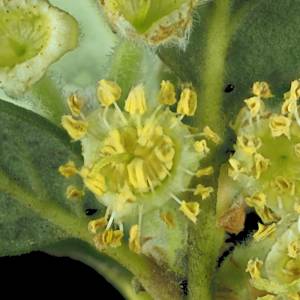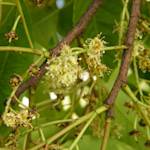Extinct In The Wild, Wood's Cycad
2003 CE • South Africa
"In 1895, a single clump of this cycad was discovered by John Medley Wood on the edge of a forest in South Africa. In 1903, Wood sent his deputy, James Wylie to collect some of the smaller offsets for cultivation in the Durban Botanic Garden, where they survive to this day.... It is not known what drove Wood's cycad to extinction in the wild, or indeed if it ever was abundant. Cycads are widely used in traditional rituals and medicine which may destroy the plants. Collecting plants for horticulture is also a serious threat to cycads and for that reason they are all listed on CITES, restricting or prohibiting their export and trade.... The successful cultivation of offsets of the original plant has ensured the ex-situ preservation of this enigmatic species."
Encephalartos Woodii (Wood's Cycad). Digital image. Kew Botanical Gardens. .
Purves, M. One of the Original Stems of Encephalartos Woodii at Durban Botanic Garden, South Africa. 4 Sept. 2010. <https://commons.wikimedia.org/wiki/File:Encephalartos_woodii_original_stem_Durban_Botanic_Gardens_04_09_2010.JPG>.


Learn about Maya Lin’s fifth and final memorial: a multi-platform science based artwork that presents an ecological history of our world - past, present, and future.

Discover ecological histories and stories of former abundance, loss, and recovery on the map of memory.

Learn how we can reduce our emissions and protect and restore species and habitats – around the world.

See how art can help us rethink the problems we face, and give us hope that each one of us can make a difference.

Help make a global memorial something personal and close to home. Share your stories of the natural world.


